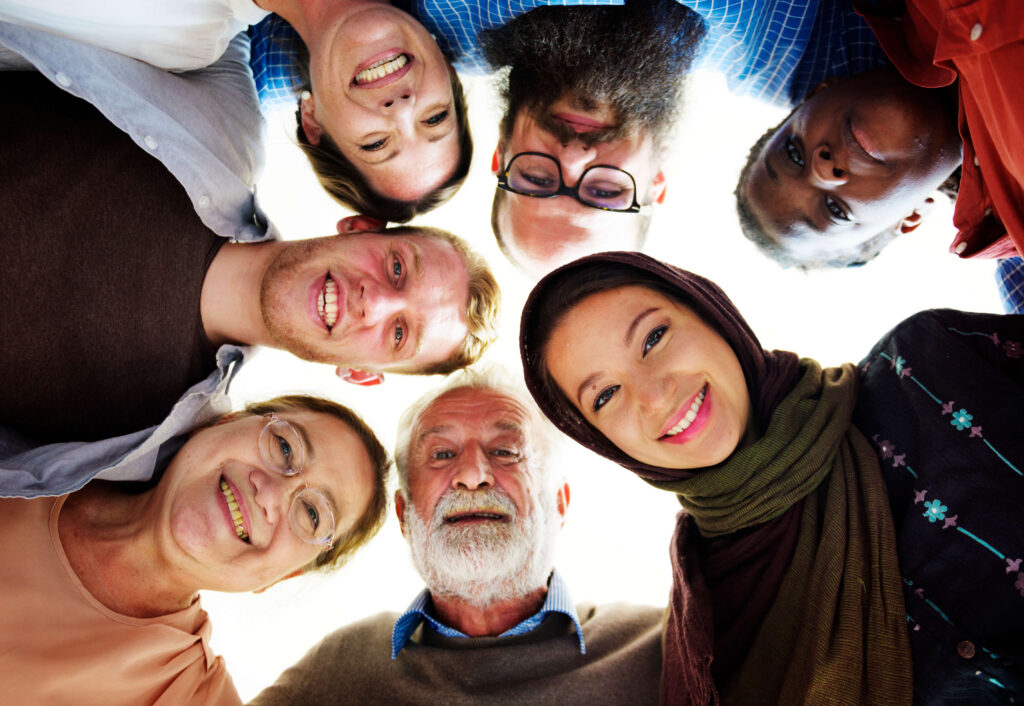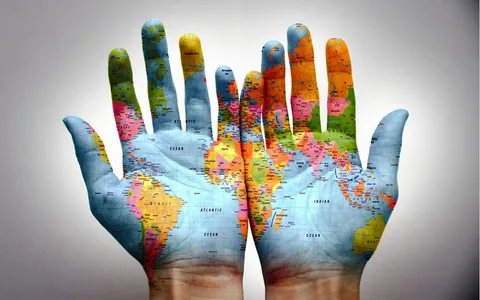Cultural diversity refers to the variety of cultural expressions and practices that exist within a society or between societies. This concept encompasses the different ways of life, traditions, beliefs, and values that characterize various groups of people around the world. Understanding cultural diversity is crucial in today’s globalized world, as it fosters respect, tolerance, and appreciation for the rich tapestry of human experience. This article explores diverse cultural facts from various societies, highlighting the significance of cultural diversity and its impact on social cohesion, identity, and global interactions.
Understanding Cultural Diversity
Cultural diversity is defined as the presence of multiple cultural groups within a society, each with its unique characteristics, practices, and beliefs. It encompasses various elements, including language, religion, customs, and social norms. The recognition of cultural diversity is essential for promoting inclusivity and understanding among different groups, which can lead to a more harmonious society.
Importance of Cultural Diversity
- Social Cohesion: Cultural diversity enhances social cohesion by promoting understanding and respect among different groups. It encourages dialogue and interaction, helping to bridge gaps between communities.
- Innovation and Creativity: Diverse cultural perspectives contribute to creativity and innovation. Different ways of thinking can lead to new ideas and solutions to problems, enriching society as a whole.
- Cultural Preservation: Recognizing and valuing cultural diversity helps preserve unique cultural practices and traditions, preventing them from being lost in a homogenizing world.
- Economic Growth: Cultural diversity can drive economic growth by attracting tourism and fostering creative industries. Diverse cultural offerings can enhance a region’s appeal and stimulate local economies.
- Global Understanding: In an increasingly interconnected world, understanding cultural diversity is vital for fostering international cooperation and peace. It helps individuals navigate cross-cultural interactions and reduces the likelihood of conflicts arising from misunderstandings.
Diverse Cultural Facts from Around the World

1. Linguistic Diversity
Language is a fundamental aspect of culture, and the world is home to approximately 7,000 languages. Some countries, like Papua New Guinea, boast an incredible linguistic diversity, with over 800 languages spoken. This diversity reflects the rich cultural heritage of the region, as language is closely tied to identity and community.
- Language Families: Languages can be grouped into families, with Indo-European and Sino-Tibetan being two of the largest. Each family encompasses numerous languages that share a common ancestral language.
- Endangered Languages: Many languages are at risk of extinction, with some estimates suggesting that one language disappears every two weeks. Efforts to document and revitalize these languages are crucial for preserving cultural diversity.
2. Religious Diversity
Religion is another critical component of cultural diversity. The world is home to numerous religions, including Christianity, Islam, Hinduism, Buddhism, and indigenous belief systems. Each religion has its unique practices, rituals, and beliefs that shape the lives of its followers.
- Religious Pluralism: Countries like India exemplify religious pluralism, where multiple religions coexist and influence each other. This coexistence fosters a rich tapestry of cultural practices and beliefs.
- Interfaith Dialogue: Promoting interfaith dialogue can enhance understanding and respect among different religious groups, contributing to social harmony.
3. Festivals and Celebrations
Cultural festivals are vibrant expressions of a community’s identity and heritage. For example, Diwali, the Hindu festival of lights, symbolizes the victory of light over darkness and good over evil. Similarly, the Chinese New Year is celebrated with elaborate festivities, including dragon dances and fireworks, marking the beginning of a new lunar year.
- Cultural Exchange: Festivals often serve as platforms for cultural exchange, allowing different communities to share their traditions and practices.
- Economic Impact: Many festivals attract tourists, boosting local economies and promoting cultural heritage.
4. Culinary Diversity
Food is a significant aspect of cultural identity, with each culture offering unique culinary traditions. For instance, Italian cuisine is renowned for its pasta and pizza, while Indian cuisine is famous for its diverse use of spices and flavors. Culinary practices often reflect a community’s history, geography, and available resources, making food a fascinating lens through which to explore cultural diversity.
- Fusion Cuisine: The blending of culinary traditions from different cultures has led to the emergence of fusion cuisine, which creatively combines elements from various culinary practices.
- Food as Identity: Traditional dishes often carry historical significance and are a source of pride for communities, reinforcing cultural identity.
5. Artistic Expressions
Artistic expressions, including music, dance, and visual arts, vary widely across cultures. For example, African music often incorporates complex rhythms and communal participation, while Western classical music emphasizes individual performance and composition. Traditional dances, such as the Maori haka from New Zealand, serve as powerful cultural symbols, conveying stories and values through movement.
- Cultural Heritage: Artistic expressions are often rooted in cultural heritage, reflecting the history and values of a community.
- Global Influence: The globalization of art has led to the cross-pollination of styles and techniques, enriching the global artistic landscape.
6. Traditional Clothing
Traditional clothing reflects cultural identity and heritage. For instance, the kimono in Japan symbolizes elegance and tradition, while the sari in India represents grace and femininity. These garments often carry historical significance and are worn during special occasions, reinforcing cultural pride.
- Regional Variations: Traditional attire varies significantly within countries, influenced by local customs, climate, and available materials.
- Modern Adaptations: Many cultures blend traditional clothing with modern fashion, creating unique styles that reflect contemporary identities.
7. Social Structures and Norms
Cultural diversity also manifests in social structures and norms. For example, some cultures prioritize collectivism, where community and family are central to decision-making, while others emphasize individualism, valuing personal freedom and self-expression. Understanding these differences is crucial for fostering effective communication and collaboration in multicultural settings.
- Gender Roles: Cultural norms often dictate gender roles, influencing expectations and behaviors within communities.
- Family Structures: Family structures can vary widely, with some cultures emphasizing extended families while others focus on nuclear families.
8. Indigenous Cultures
Indigenous cultures around the world offer unique perspectives on sustainability, community living, and spirituality. For instance, Native American tribes have rich traditions of storytelling, art, and connection to the land, emphasizing the importance of preserving nature. Recognizing and respecting indigenous cultures is vital for promoting social justice and environmental stewardship.
- Cultural Resilience: Indigenous communities often demonstrate resilience in the face of globalization, actively preserving their languages, traditions, and ways of life.
- Land Rights: Advocacy for indigenous land rights is crucial for protecting cultural heritage and promoting environmental sustainability.
Challenges to Cultural Diversity

Despite the benefits of cultural diversity, several challenges persist:
- Cultural Homogenization: Globalization can lead to the erosion of local cultures as dominant cultures overshadow smaller ones. This phenomenon, known as cultural homogenization, threatens the survival of unique cultural practices.
- Discrimination and Prejudice: Cultural stereotypes and discrimination can hinder social cohesion and create divisions within societies. Addressing these issues requires education and awareness to foster understanding and acceptance.
- Language Endangerment: Many languages are at risk of extinction, with estimates suggesting that one language disappears every two weeks. Language loss not only diminishes cultural diversity but also erases valuable knowledge and traditions.
- Economic Disparities: Economic inequalities can exacerbate cultural divides, limiting access to resources and opportunities for marginalized communities. Promoting inclusivity and equitable access to cultural expressions is essential for fostering diversity.
- Political Factors: Political instability and oppressive regimes can threaten cultural diversity by suppressing minority voices and promoting a singular national identity.
Promoting Cultural Diversity
To promote cultural diversity, individuals and communities can take several steps:
- Education and Awareness: Learning about different cultures and their contributions fosters appreciation and respect. Educational institutions should incorporate multicultural curricula to expose students to diverse perspectives.
- Cultural Exchange Programs: Encouraging cultural exchange programs allows individuals to experience and learn from other cultures firsthand, fostering empathy and understanding.
- Support for Minority Cultures: Supporting minority cultures through funding, representation, and advocacy helps preserve their unique identities and practices.
- Celebrating Diversity: Organizing cultural festivals and events that celebrate diversity encourages community engagement and promotes intercultural dialogue.
- Advocating for Rights: Supporting policies and initiatives that protect the rights of cultural minorities is essential for ensuring their voices are heard and valued.
FAQs about Cultural Diversity
Q1. What is cultural diversity?
A1. Cultural diversity refers to the variety of cultural expressions, practices, and beliefs that exist within a society or between societies. It encompasses different languages, religions, customs, and social norms.
Q2. Why is cultural diversity important?
A2. Cultural diversity is important because it enhances social cohesion, fosters innovation and creativity, preserves unique cultural practices, drives economic growth, and promotes global understanding.
Q3. What are some examples of cultural diversity?
A3. Examples of cultural diversity include linguistic diversity (e.g., multiple languages spoken in a region), religious diversity (e.g., coexistence of various religions), and culinary diversity (e.g., different traditional cuisines).
Q4. How can we promote cultural diversity in our communities?
A4. Promoting cultural diversity can be achieved through education and awareness, cultural exchange programs, supporting minority cultures, celebrating diversity through festivals, and advocating for the rights of cultural minorities.
Q5. What challenges does cultural diversity face today?
A5. Cultural diversity faces challenges such as cultural homogenization, discrimination and prejudice, language endangerment, economic disparities, and political factors that suppress minority voices.
Conclusion
Cultural diversity enriches our world, offering a wealth of perspectives, traditions, and practices that contribute to the human experience. By understanding and appreciating the diverse cultures that exist within our societies, we can foster social cohesion, innovation, and global understanding. Embracing cultural diversity is not only a moral imperative but also a pathway to a more inclusive and harmonious world. As we navigate the complexities of an interconnected global society, recognizing the value of cultural diversity will be essential for building a brighter future for all.





